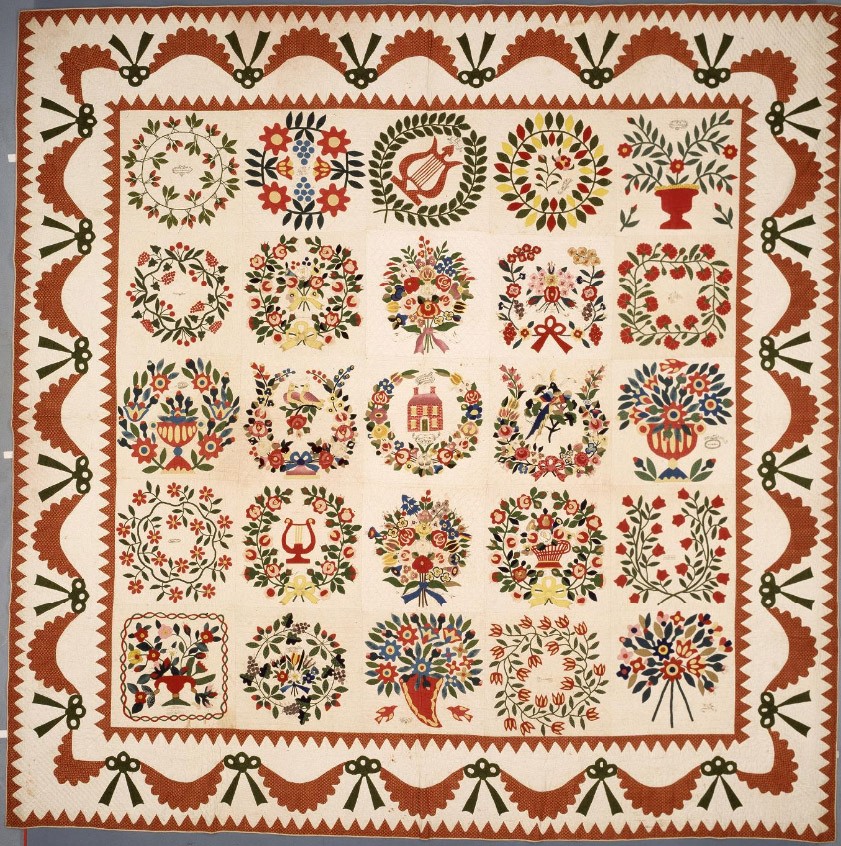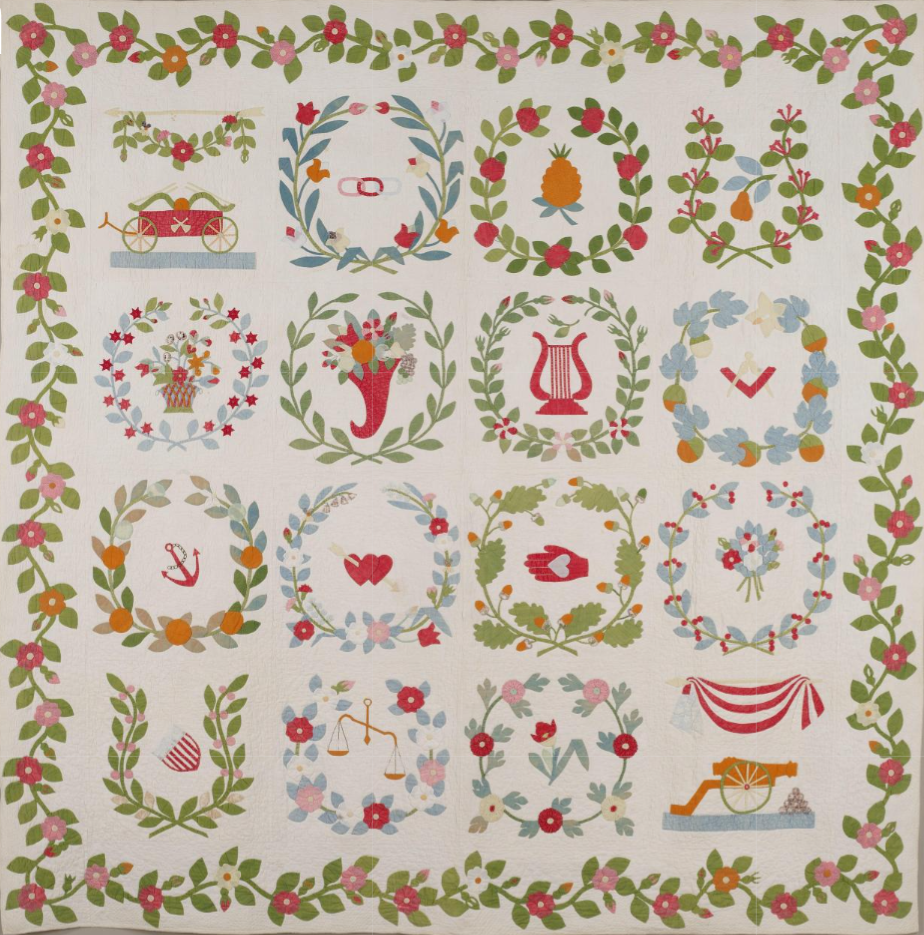Textiles and the Triplett Sisters
Baltimore Album Quilts: Creation

In recent conversations about the blog, it was suggested that it might be helpful to be aware of the many reasons why the quilts were created. It isn’t as straightforward as you might have thought. We need to look at the clues found in “album” quilts, a quilt containing squares of appliqued designs or images.

The reason for the quilt is sometimes included in the imagery of the quilt, such as an autograph book, letting you know this was created to collect autographs. In the 1820s autograph books were found in homes, where the guests could sign their name along with inspirational messages. The fad was transferred to quilts using stitching first, then in the thirties as indelible ink was more commonly available, it made the inscribed fad even easier for quilts. (Inscribed is a safe term to use until you know if it is actually a signature, or instead someone else wrote all the names/inscriptions. For more on this topic here's a link to a previous blog.) Godey’s Lady’s Book provided suggestions of messages and poems to be written in an autograph book. Parties were even held to stitch and sign blocks.

An image of a ship might be a clue that it was made for the captain moving to another port. Or an apprentice had completed his time or service and released. It could also be a memorial image to honor a fallen soldier or leader. An image of a Bible has led researchers to realize how many of these quilts were created as a gift to a pastor as he was moving to another church or missionary field, for long service as he retired. It may also be a political statement if it contains a rooster (democratic party), three chains for an organization, a fountain (temperance) or a log cabin for a political campaign. So, always analyze the images to see what story is being shared.
The second clue to the reason the quilt may have been made can be found in the inscriptions (if it has inscriptions and is readable.) The listed names may guide you to specific family, neighborhood, or an organization. The inscriptions may tell you if it is for a memorial, for providing good medical care, or another specific reason.

A third clue may be found in matching blocks. Track the similar blocks to see what clues can be found in the inscribed information, in the fabric matches, and style of the blocks will also provide additional information. Which is how we got to wondering who some of the artists are who made these blocks, which can be as varied as the reasons the quilts were made.

